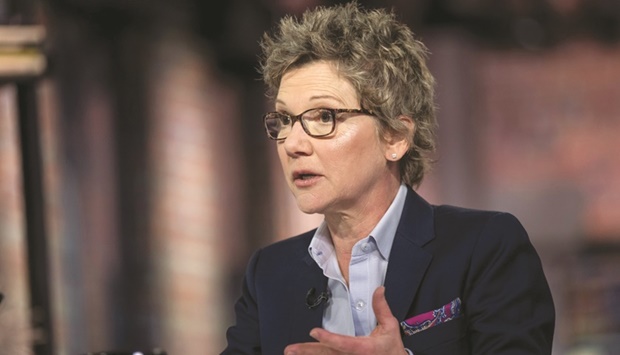Another Federal Reserve official has lined up with those who favour following last week’s 75 basis-point interest-rate increase with the same again next month to curb rampant inflation.
“Seventy-five in July is where I’m starting because I think that right now, that looks like what we’ll need to do,” Federal Reserve Bank of San Francisco President Mary Daly told reporters on Friday following a speech in Orange, California. “But I’ll be watching to see any signs that we are less sure about the tightening level that’s already taking place.”
The central bank, which raised interest rates by 75 basis points this month in an effort to stem the fastest price gains in 40 years, has put policy on an “expeditious path” by the end of the year to neutral, the rough level that neither speeds nor slows the economy.
Additional tightening beyond that is likely the next step, Daly said during her prepared remarks at a conference, hosted by the Shadow Open Market Committee, a group of Fed watchers.
“How much additional tightening will be required depends on a number of factors that fall outside of the Fed’s direct control, including the speed and magnitude of supply chain recovery, the duration of the war in Ukraine, and the willingness of individuals who have left the labour force to reenter,” Daly said.
Daly joins a growing band of officials, including policy makers previously on the dovish wing of the central bank, who’ve either declared in favour of raising by 75 basis points next month or said they’re open to do that, or a smaller 50 basis-point move as they seek to cool spiralling prices.
These include Governors Christopher Waller and Michelle Bowman, who both back the larger move, and regional presidents including Chicago’s Charles Evans, Neel Kashkari in Minneapolis and Philadelphia’s Patrick Harker.
Officials got unexpected good news on Friday after a key measure of long-term inflation expectations rose by less than expected.
The University of Michigan’s final June reading of longer-term US consumer inflation expectations settled back from an initially reported 14-year high. Respondents said they expect inflation to rise 3.1% over the next five to 10 years, down from a preliminary reading of 3.3%.
News of that result, alongside a much higher-than-expected reading on May consumer prices, pushed the Fed to raise rates by 75 basis points last week, despite having previously signalled that a 50 basis-point move was on the table.
Daly said that she would still have supported the bigger increase even if she’d had the final reading in hand, citing the strength of demand, supported by household savings boosted by pandemic aid. Such a quick tightening path - most policy makers see the federal funds rate reaching at least 3.4% by the end of the year - will likely result in some cooling of the economy and labour market, but she said the transition should be smooth, with elevated inventories and job openings helping cushion the blow from higher rates.
“I do expect the costs of adjustment to be moderate, with some slowing of GDP growth below its longer-run trend and an increase in the unemployment rate from the very low levels we see today,” Daly said.
The US economy will likely react similarly to how it did in the 1990s, when the Fed quickly raised rates to put the brakes on a rapidly declining unemployment rate, which some at the time feared could lead to runaway inflation. The economy was able to take that rate adjustment in stride and continue expanding, Daly said.
That confident tone chimes with remarks earlier Friday from St Louis Fed chief James Bullard, who said the risk of a US recession are overblown, as consumers are flush with cash.
“I actually think we will be fine,” Bullard said in a speech in Zurich on Friday. “It is a little early to have this debate about recession probabilities in the US.”
Bullard, a policy voter this year, didn’t explicitly spell out if he supported raising rates by 75 basis points next month.
But he’s been among the most hawkish of officials and he repeated his call for further “front-loading” of rate hikes to contain inflation.

Mary Daly, president of the Federal Reserve Bank of San Francisco.
